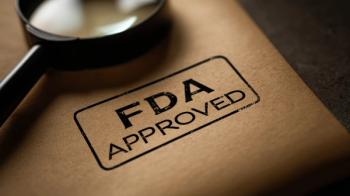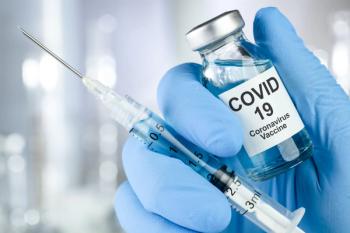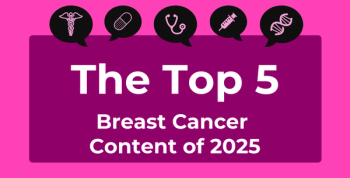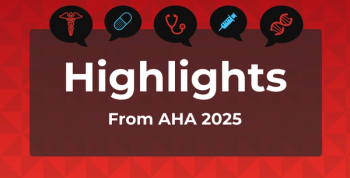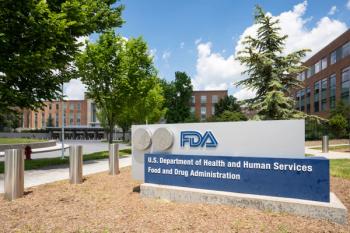
Prolonged Mental Health Recovery Linked to Long COVID
Key Takeaways
- Mental health recovery from COVID-like symptoms can take up to nine months, compared to three months for physical health recovery.
- Nearly 20% of patients report reduced health-related quality of life one year after COVID-like symptoms, indicating long-term impacts.
New research reveals mental health recovery post COVID-19 takes nearly 3 times longer than physical health, highlighting the need for targeted care strategies.
In the process of recovering from
In Open Forum Infectious Diseases, these findings and additional data from the CDC’s INSPIRE project (Innovative Support for Patients with SARS-CoV-2 Infections Registry; NCT04610515) shed new light on recovery after COVID-like symptoms.1 The study authors also highlight that up to 1 year after infection, close to 20% of patients continued to report a reduced health-related quality of life (HRQOL) vs before their self-reported COVID-like symptoms, and that there is potential for underestimation of other illnesses because of this; among their study population, health recovery recovered to a higher level for those who reported COVID-like symptoms vs those who tested negative.
“For patient prognostics, we found somewhat more pronounced recovery (ie, return to the optimal HRQOL) for those in the COVID+ group compared to the COVID− groups, after adjustment,” the study authors wrote. Their results speak to the need for ongoing vigilance on the part of health care providers toward their patients’ mental health throughout recovery and to tailor care strategies accordingly.
All patients in this study were 18 years and older at enrollment, with most participants in the COVID-positive (COVID+; n = 733) and COVID-negative (COVID–; n = 734) groups well balanced in regard to age (18 to 34 years, 41.6% and 41.2%; 35 to 49 years, 31.1% and 31.5%), gender representation (68.5% and 72.4%, female; 30.1% and 26.4%, male; 1.4% and 1.2%, transgender/nonbinary/other), race (70.5% and 72.5%, White; 8.1% and 8.2%, Black; 12.0% and 10.9%, Asian), and ethnicity (12.7% and 17.8%, Hispanic/Latin/Spanish origin; 87.3% and 82.2%, not of Hispanic/Latin/Spanish origin).
Four classes of HRQOL were identified using latent transition analysis—optimal HRQOL, poor mental HRQOL, poor physical HRQOL, and poor overall HRQOL—and the patients were evaluated for cognitive function, physical function, social participation, anxiety, depression, fatigue, sleep disturbance, and pain interference to be placed in one of these classes.
Not surprisingly, the highest mean (SD) overall scores were seen for those in the optimal HRQOL class, at 57.3 (7.1) for cognitive function, 55.2 (4.4) for physical function, 59.5 (8.0) for social participation, 43.9 (5.5) for anxiety, 42.5 (3.5) for depression, 44.9 (7.1) for fatigue, 46.2 (6.3) for sleep disturbance, and 43.4 (4.6) for pain interference. The lowest, or “worst” scores were seen among those in the poor overall HRQOL cohort: 36.6 (7.1), 38.2 (7.3), 40.6 (8.4), 63.3 (6.5), 59.4 (6.6), 64.4 (6.2), 58.8 (7.1), and 58.2 (9.3), respectively.
The individuals in the poor mental HRQOL class had poor scores on 4 of the 8 domains, in particular: anxiety (57.3 [5.9]), depression (53.6 [6.1]), cognitive function (45.2 [7.8]), and fatigue (54.3 [8.6]). And those in the poor physical HRQOL had suboptimal scores on 6 of the 8 domains: cognitive function (45.1 [9.2]), physical function (40.4 [6.4]), social participation (46.5 [9.5]), fatigue (58.0 [6.0]), sleep disturbance (53.0 [6.6]), and pain interference (53.5 [8.6]).
Seventy-three percent of all participants were in one of the poor HRQOL classes at baseline, but shifts were frequent from baseline to the 3-month follow-up. At that point, 58% were still in a class with poor HRQOL compared with more stabilized rates seen for each class from 3 months to 12 months.
Still, “A substantial number of participants remained in the poor overall HRQoL class through 12 months after illness,” the authors wrote. These patients also had significantly higher symptom severity scores at baseline, more comorbidities, and more symptoms at baseline, they added.
At the final follow-up, long COVID was most prevalent among those in the poor overall HRQOL class (42.4%). Adjusted models attempted to explain why. The COVID+ cohort was more likely to be in the optimal HRQOL for the entire study period, but recovery from baseline to 3 months was driven primarily by physical improvements; mental health recovery was more pronounced starting at 6 and 9 months. Overall, over the 12 months of follow-up, improving from poor overall to optimal well-being did not much budge, with the numbers coming in low at 1.4% to 5.2% of both COVID groups.
“We have newly recognized the difference in recovery with respect to mental vs physical well-being after a COVID infection," said Lauren Wisk, PhD, study co-lead author, David Geffen School of Medicine at UCLA,
Post–COVID-19 triage and treatment encounters, the authors emphasized, can and need to be improved.
References
- Wisk LE, Gottlieb M, Chen P, et al. Association of SARS-CoV-2 with health-related quality of life 1 year after illness using latent transition analysis. Open Forum Infect Dis. Published online June 10, 2025.
- Rivero E. People with COVID-like symptoms took up to nine months post-infection to regain mental well-being. News release. UCLA Health; June 10, 2025. Accessed June 10, 2025.
https://www.newswise.com/articles/people-with-covid-like-symptoms-took-up-to-nine-months-post-infection-to-regain-mental-well-being
Newsletter
Stay ahead of policy, cost, and value—subscribe to AJMC for expert insights at the intersection of clinical care and health economics.

